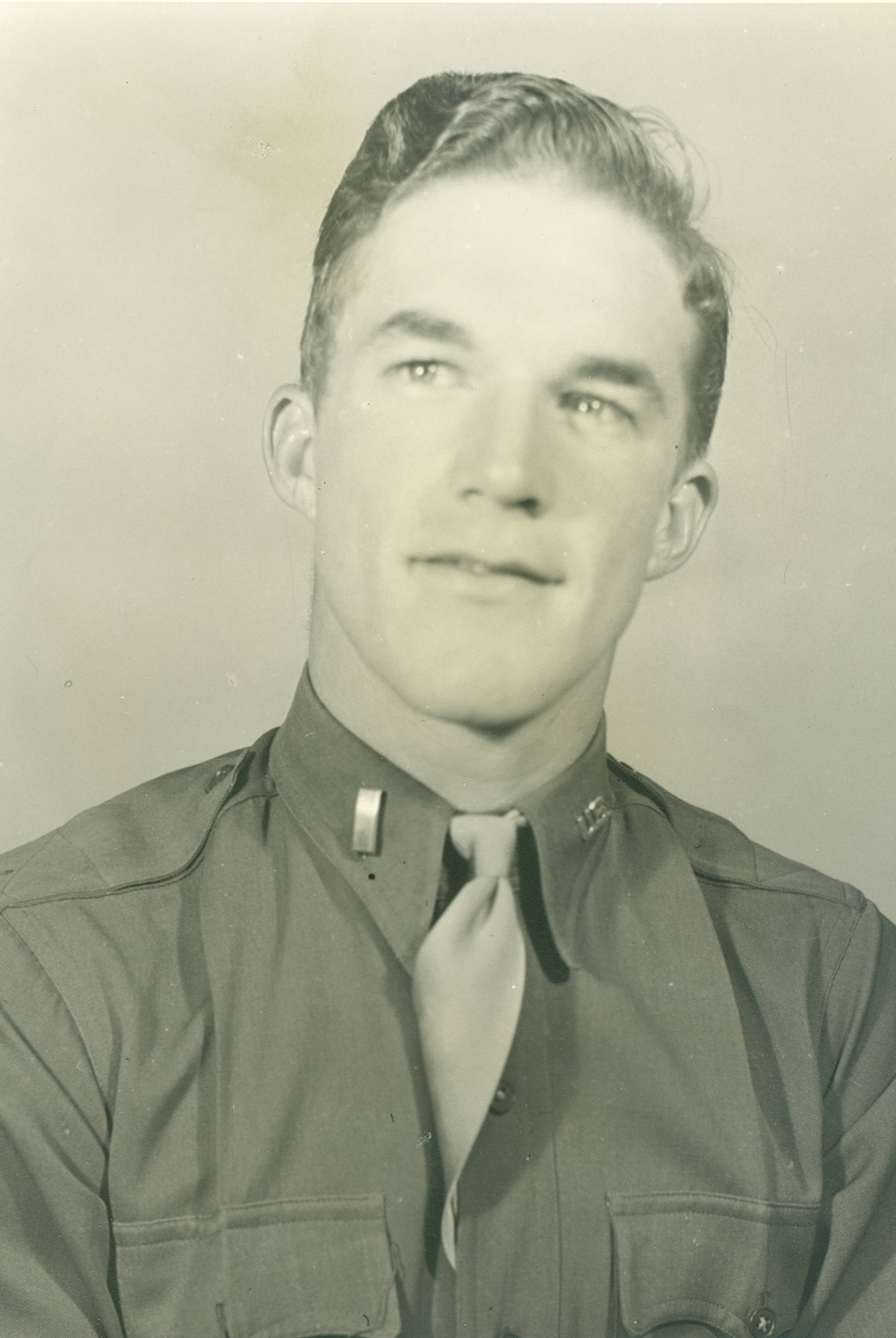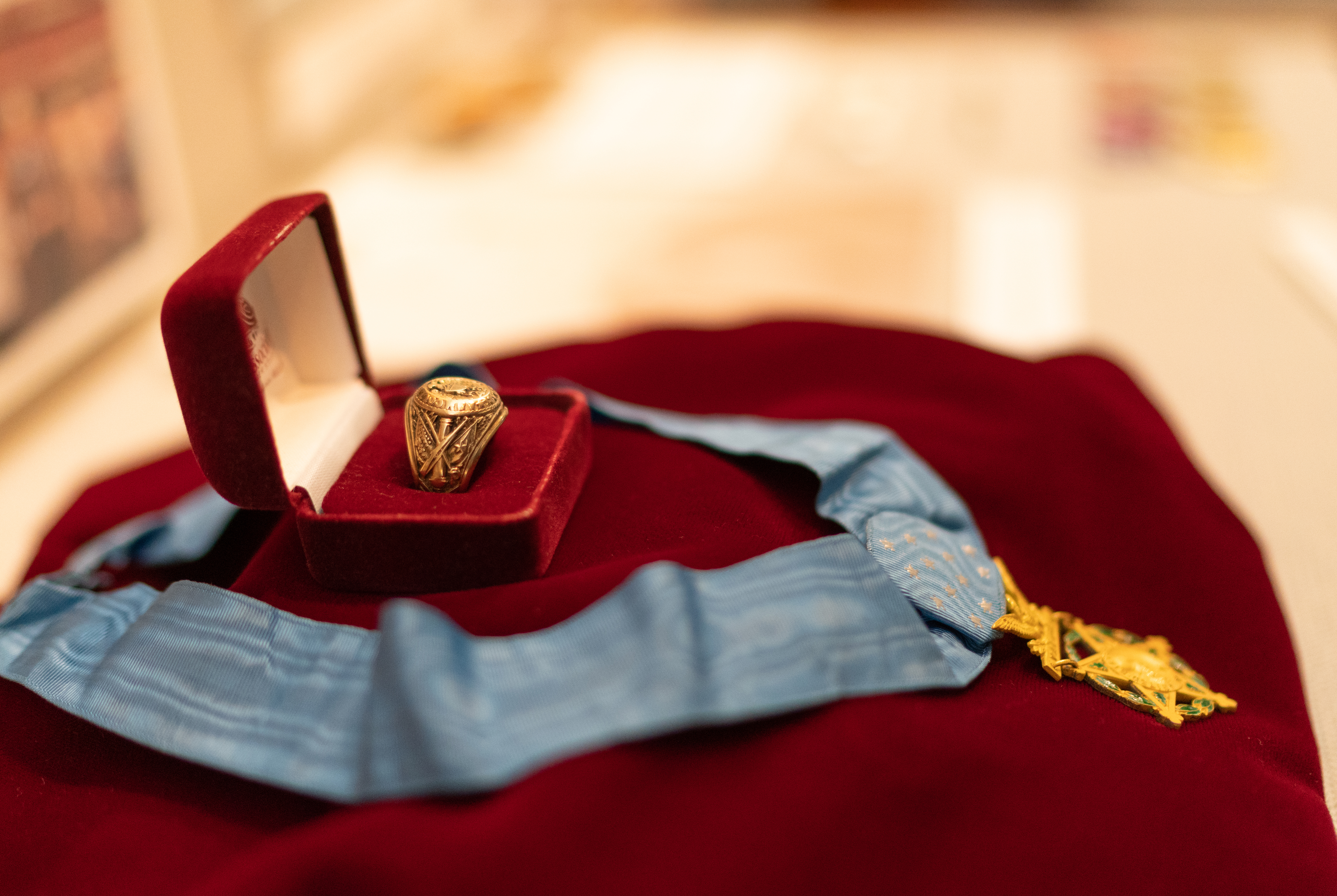 Turney Leonard '42 posthumously received the Medal of Honor in September 1945 in recognition of his perseverance and courage during World War II.
Turney Leonard '42 posthumously received the Medal of Honor in September 1945 in recognition of his perseverance and courage during World War II.
After graduation, Nelson utilized the work ethic he had learned from his Aggie mentors and experiences to build a successful career in the petroleum industry. In 1958, he joined Grey Wolf Drilling Company. By 1978, he was its president and owner. Upon his retirement in 1998, Nelson sold the company and used funds from the sale to name the Harold Vance Department of Petroleum Engineering at Texas A&M and create two faculty chairs in honor of Albert Stevens and Robert Whiting.
In addition to his gifts to advance Aggie petroleum engineers, Nelson held offices in local A&M clubs as well as with The Association of Former Students and the 12th Man Foundation. For his leadership and undying support of Texas A&M, Nelson received the Texas A&M Foundation’s Sterling C. Evans Medal in 2011 and was honored as both an Outstanding Alumnus of the College of Engineering in 2000 and as a Texas A&M Distinguished Alumnus in 2005. Nelson is proud of these honors, but he gets joy in the act of giving more than recognition. Perhaps no gift left a greater impression on him than the one that concluded a 60-year long saga of heroism and unlikely circumstances.
A year before Nelson enrolled at Texas A&M, former student and Army infantryman Turney Leonard ’42 was seriously wounded while fighting in the Battle of Hürtgen Forest, one of the longest and bloodiest frays in U.S. Army history. Surrounded by German forces, Leonard refused to be evacuated. Instead, he rounded up Americans who had lost their commanding officers and held the line against the encroaching Germans until he was incapacitated by an explosive shell and lost in the chaos. Leonard posthumously received the Medal of Honor in September 1945, four months after German forces surrendered.
In 1946, German teenager Alfred Hutmacher was helping search for war dead when he found a large gold ring buried in the battlefield soil. Unaware of its significance, Hutmacher placed the ring in his pocket and stowed it away for 50 years until his son-in-law, German army officer Volker Lossner, expressed interest in Hürtgen Forest. Lossner took the ring to the U.S. Army Liaison Office, where its owner was identified as a decorated fallen Aggie. On Nov. 11, 2000, Lossner personally returned the ring to Turney’s brother, Douglas, in College Station.
 Leonard's Aggie ring and Medal of Honor are housed in the Sam Houston Sanders Corps of Cadets Museum.
Leonard's Aggie ring and Medal of Honor are housed in the Sam Houston Sanders Corps of Cadets Museum.
The story of Leonard’s ring moved Nelson. During a 2007 road trip to see historic European battlefields (including monuments scattered across the Hürtgen Forest) with a group of fellow Aggies, he made a special pit stop at the Lossner residence in Kommerscheidt, Germany, which sits about 500 yards from the field where Leonard died. As they chatted about the ring and the Aggie hero at the center of its tale, Nelson noted that Lossner’s sons, Sebastian and Jonas, ages 15 and 11, would be attending college in a few years.
Suddenly, Nelson made a life-changing offer: If the boys wanted to be Aggies, he would pay for their tuition. In time, Sebastian and Jonas took Nelson up on his offer and graduated from Texas A&M in 2016 and 2020, respectively, with Sebastian studying accounting and Jonas studying multidisc engineering technology. “I expect great things from both of them,” Nelson said, beaming. What began with one heroic soldier’s tragic death five thousand miles away from home ended with two German boys receiving an opportunity to discover the place that soldier held dear. Everything in between was the invisible work of a certain spirit.